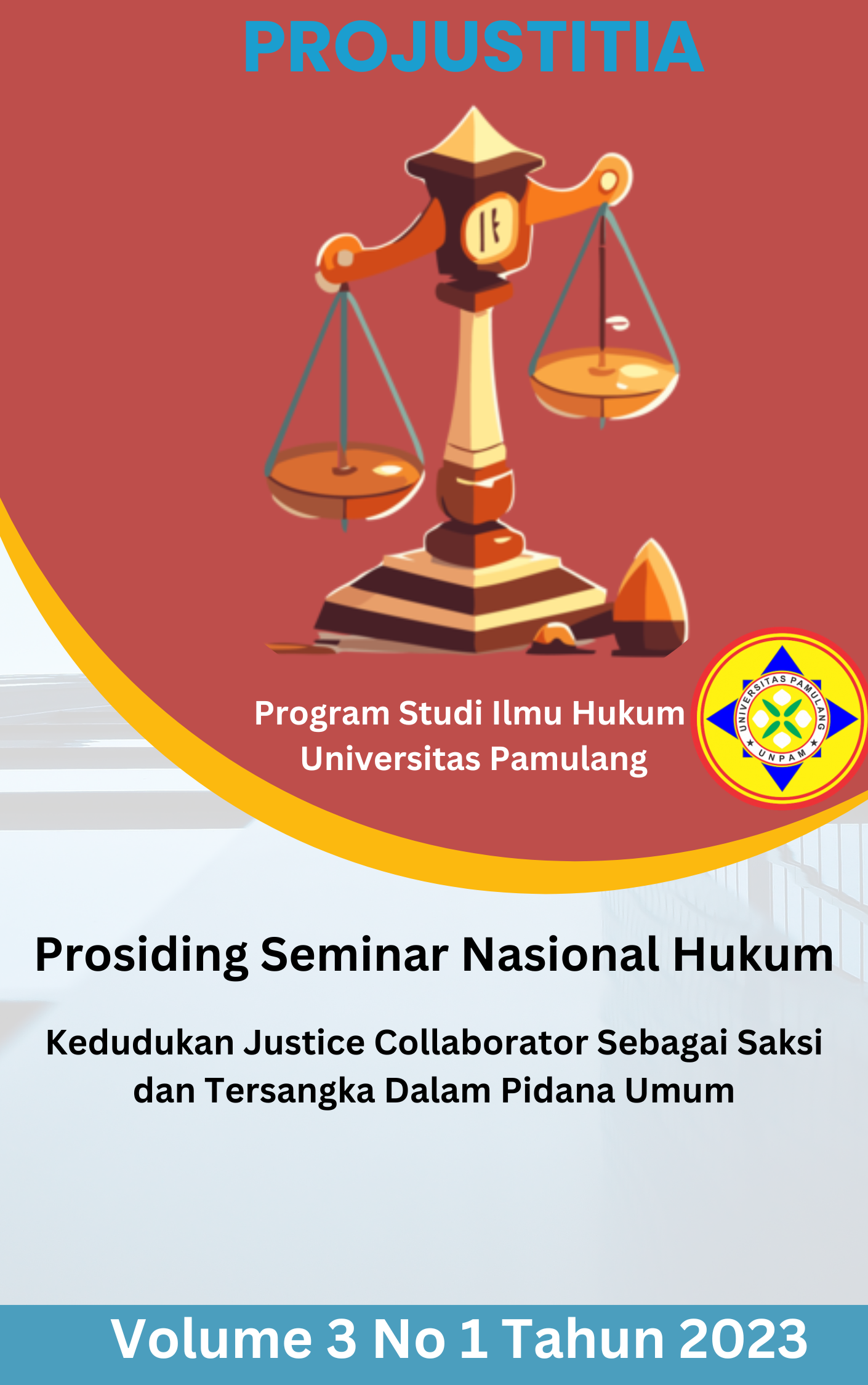TINJAUAN YURIDIS TERHADAP ANAK YANG MELAKUKAN TINDAK PIDANA PEMBUNUHAN
Abstract
This research is motivated by Law Number 11 Years 2011 concerning the Juvenile Criminal Justice System. In this provision it is explained that Child protection is regulated in legal provisions regarding children, especially for children who commit criminal acts is regulated in Law Number 11 of 2012 concerning the Juvenile Criminal Justice System. Criminal cases involving a child, regardless of position as a victim or perpetrator, it often happens. The child is here in the position of the perpetrator, the intensity of his actions can already be said to be very high terrible and immoral. Child protection possible also interpreted as efforts aimed at preventing, rehabilitating, and empowering children who experience acts of violence (child abuse), exploitation, and neglect aim to guarantee normal survival and development of children both physically,mental and social. This research raises 2 (two) issues related to the punishment and protection of children who commit the crime of murder, namely first, how to resolve the crime of murder and sanctions against children who commit the crime of murder. Second, what form of legal protection is given to children who commit crimes murder crime. This study aims to find out how the settings Punishments and forms of legal protection are given to children who commit them murder crime. This study used qualitative research methods with a normative juridical approach, where data is collected to answer the problem formulation taken based on literature studies guided by laws and regulations, books, literature, articles or journal. journals and other materials relating to the issues discussed. The next stage after data processing is analysis Overall data, normative legal research is data analysis, data analysis used is descriptive qualitative, because The data collected is data in the form of words or descriptive obtained from documents in the form of laws and regulations related to invitations were analyzed qualitatively, namely subjective and interpretive and carried out by understanding and assembling data obtained and have been classified systematically and then a conclusion is drawn. The results of this study indicate that Law Number 11 of 2012 concerning the Juvenile Criminal Justice System states that child protection is regulated in legal provisions. regarding children, especially for children who commit criminal acts is regulated in Law Number 11 of 2012 concerning the Juvenile Criminal Justice System and Law Number 35 of 2014 concerning Amendments or Law Number 23 of 2002 concerning Child Protection. Article 1 point 1 Law no. 35 of 2014 concerning Child Protection states that a child is someone who is not yet 18 years old, including the unborn child. System Act The Juvenile Criminal Court defines a child as a child who against the law, namely a child who is 12 years old, but under the age of 18 who are suspected of committing a crime. Every child has basic rights that need to be fulfilled, protected and protected by everyone, if the child gets into trouble as best he can possible to keep away from the realm of law, guard and protect too fulfill children's rights without exception.
Keywords: Child protection, Juvenile Criminal Justice System, crime of murder


